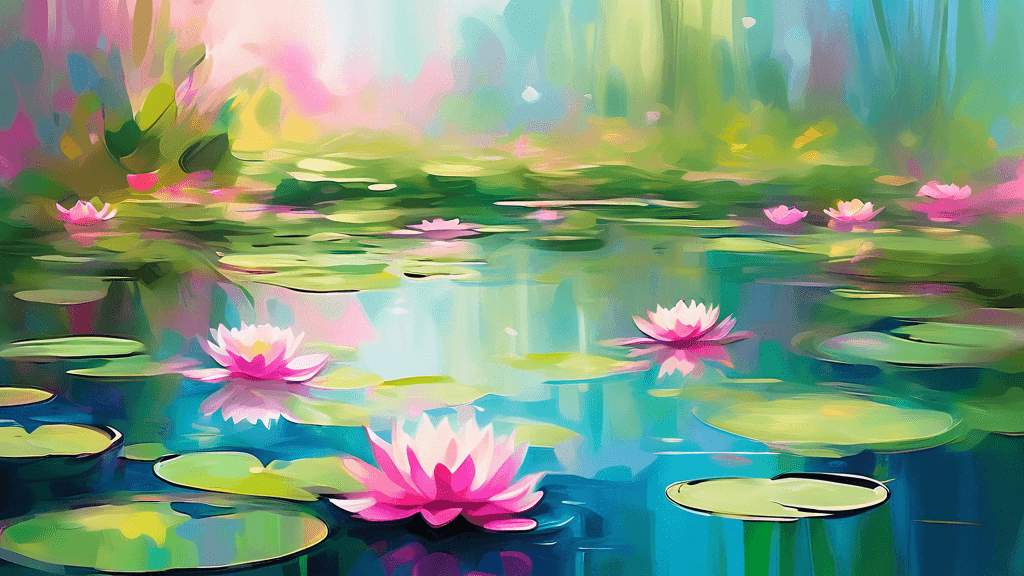
Painting Nature: Capturing Water Lilies and Aquatic Plants
Share
The Art of Capturing Water Lilies and Aquatic Plants in Painting
Painting nature, particularly water lilies and aquatic plants, has long been a beloved subject for artists throughout the centuries. What makes these aquatic beauties a favorite among artists? Is it the way light filters through their petals, the tranquility of their aquatic environments, or the challenge they present to the painter's skill? Let’s dive into the depths of this captivating subject, exploring not only its beauty but also its complexity.
Why Focus on Water Lilies and Aquatic Plants?
Water lilies and their aquatic counterparts possess an inherent serene beauty and complexity that make them fascinating subjects for painters. They offer a unique challenge due to their environment and the way light interacts with water. But beyond their aesthetic appeal, these plants also hold deeper ecological significance. They are an integral part of their ecosystems, providing habitat and oxygen to aquatic life forms.
Consider the words of Claude Monet, one of the most renowned painters of water lilies: These water lilies are an extension of my life. Without the water, the lilies cannot live, as I am without art. Monet’s passion for painting water lilies was not just about capturing their beauty, but also about immersing himself in their world, understanding their nature, and conveying their importance to the viewer.
Techniques for Painting Water Scenes
Capturing the essence of water lilies and aquatic plants on canvas requires mastery of certain painting techniques. Here are some methods commonly used by artists:
- Color Layering: Water has unique reflective qualities, and achieving this effect can be done through careful layering of colors. This helps in creating depth and realism in the painting.
- Impressionistic Strokes: Using loose, flowing strokes can mimic the movement of water and plants. This style was famously used by the Impressionists to capture the ever-changing nature of water surfaces.
- Glazing: This technique involves applying multiple layers of transparent paint to achieve luminosity and a variety of tones that give life to water settings.
Environmental Importance of Aquatic Plants
Aquatic plants like water lilies do more than serve as beautiful subjects; they play a crucial role in maintaining the health of their habitats. They help regulate water temperature, purify water by absorbing toxins, and provide food and shelter for fish and other wildlife. Painting these scenes can also be an act of environmental advocacy, illustrating the beauty of these ecosystems and the need to protect them.
As noted by environmental scientist Dr. Jane Spence, Aquatic plants are not just aesthetical elements of water bodies, but fundamental building blocks of aquatic ecosystems. Through painting, awareness and appreciation of these vital ecosystems can be raised, influencing public perception and potentially inspiring conservation efforts.
Visiting Local Ponds and Water Gardens for Inspiration
For artists looking to start painting water lilies and aquatic plants, visiting local ponds, lakes, and water gardens can be incredibly inspiring. Observing these plants in their natural surroundings allows artists to see firsthand how they interact with their environment, and how light and other elements affect their appearance.
The experience of being in nature not only provides practical insights but also connects the artist with the calmness and serenity associated with aquatic settings, potentially translating these feelings onto the canvas.
Conclusion: The Ripple Effect of Painting Water Lilies
Painting water lilies and aquatic plants goes beyond being just an art form. It is a deep dive into understanding and appreciating nature’s complexities. The effort to capture their ethereal beauty can also be a method of exploring and advocating for the environments they represent.
So, why not grab your brushes, set out to the nearest pond, and let the world of water lilies inspire your next artistic masterpiece? It’s not only an opportunity to refine your painting skills but also a chance to connect with nature and contribute to its appreciation and preservation.





